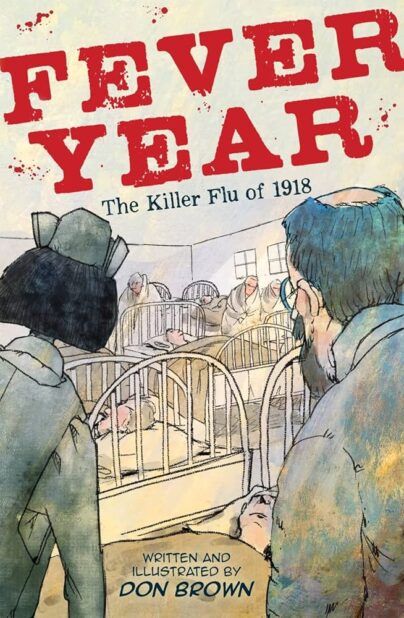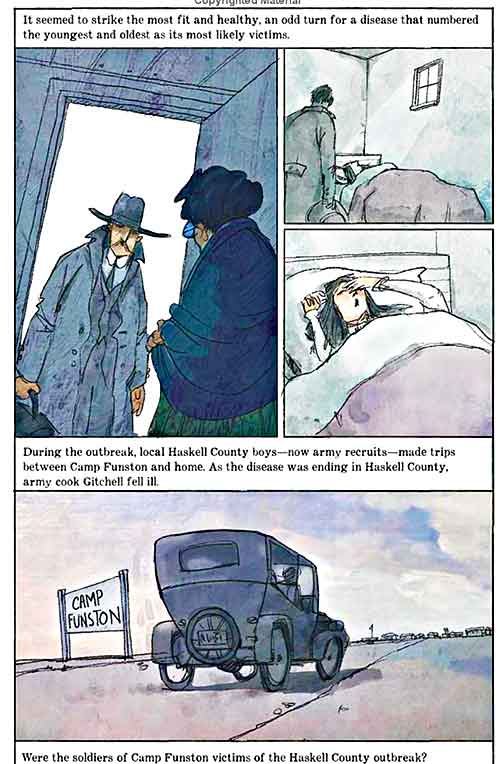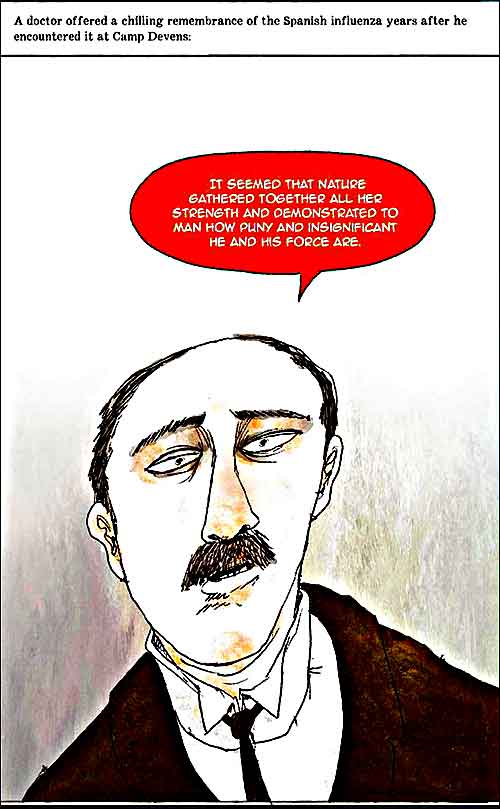By DON BROWN (Houghton Mifflin Harcourt; 2019)
This powerful graphic novel depiction of the so-called Spanish Flu of 1918-19 had a most intriguing publication date: September 2019, a little over a century after the epidemic it dramatizes and, ironically, just a few months shy of the 2020 Covid pandemic. Thus, what was intended, and initially interpreted, as a cautionary history lesson ended up becoming a present-day commentary.
Written and illustrated by Don Brown, FEVER YEAR chronicles the flu, from New Year’s Day of 1918, when America was embroiled in WWI and “People had decided to ration happiness along with beef and chicken,” to the still-inconclusive research into what precisely caused the contagion. That research, according to Brown, continued into 2005, when scientist Terrence Tumpey literally recreated the Spanish Flu, inspiring a most pertinent moral conundrum—a conundrum that, like so much else about this book, is quite relevant to the Covid era (and the “Was-it-made-in-a-lab-or-not?” controversy about how it came into being).
FEVER YEAR takes a panoramic view of early Twentieth Century America, with a cast of characters that includes Walt Disney, who as a young Red Cross Motor Corps volunteer was laid low for three weeks by the Spanish Flu, as well as President Woodrow Wilson, who became violently ill at the January 1919 Paris Peace Conference, and author Katherine Anne Porter, who nearly died a year earlier. We also learn of the draconian mask mandates instituted by the government (sound familiar?), the crackpot cures that were broached (salt stuffed up noses, nightcaps worn to bed and the “miracle drug” onions) and the desperate attempts made by scientists to create effective vaccines.
Don Brown’s pen-and-ink artwork is far from photo-realistic, but does a good job rendering the hospital beds, masses of corpses, microscopic germs and empty cityscapes that characterized the Fever Year. Simplicity and accessibility appear to have been Brown’s major concerns, and he’s created a comic book history lesson that is indeed simple and accessible, and disconcertingly up to date.



